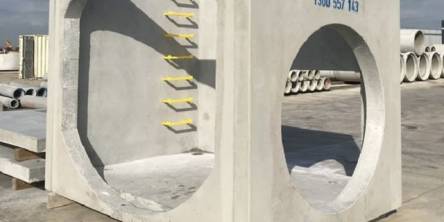Choosing Industrial Lighting: Pros and Cons of Different Fixtures

While considering industrial lighting for your business, there are various types to choose from. The following information will give you an overview of these different types of lights, some of the pros and cons of the different types and what industrial lights are used for.
Lighting is made for many different applications in the industrial world. Some of the needs for these lights would be lighting for spray paint booths, lighting that is explosion-proof, marine lighting, and lighting that is manufactured specifically for damp environments. To install the right industrial lighting fixtures, you should take the help of professionals emergency electrician.
There are different types of lights that are made for industrial situations, LED, halogen, and tubular fluorescent, and many more. Let's take a look at these different types and discover a basic knowledge of how each one works.
1. LED Industrial Lighting
LED, or "light-emitting diode," lighting comes in a variety of colors, including green, yellow, and red. They are almost indestructible and use very little electricity to run, making them very cost-efficient. They contain two diodes, a positive and a negative. The current flows from positive to negative, and this creates the light that you see.
They give off less heat than an incandescent light does, making them great for industrial workplaces, but the actual lighting components may be more expensive than traditional fluorescent lighting fixtures. To replace old lighting fixtures with new ones, take the help of skilled electricians like central coast emergency electricians.
2. Halogen Industrial Lighting
Another type of industrial lighting is halogen. Halogen lights are also a cost saver. They give off a lot of light and use minimal amounts of electricity. In a halogen light, the bulb is filled with an inert gas (or halogen), and inside this inert gas is a tungsten filament. The filament heats up while the halogen keeps the filament from burning itself out. If anything goes wrong in your industrial lighting, immediately call the reliable electrician like central coast emergency electrician.
3. Fluorescent Tubular Lighting
Finally, the traditional lighting in most workplaces has been the fluorescent tubular variety that we are all familiar with. In these lights, a long cylindrical tube is filled with mercury vapor and a phosphor. The mercury vapor reacts with the phosphor when an electrical charge runs through it, creating the light.
These lamps also need a ballast for controlling the electrical current that flows through them. In the past, only larger fluorescent bulbs and fixtures were available, but in keeping with the times and the needs of different applications, smaller fixtures and bulbs are now being made.
4. Handheld Industrial Lighting
Sometimes a handheld device is needed for use in tight spaces. Handheld industrial lighting is available and can be used where you need a light that is portable. Engine repair, aircraft maintenance, marine applications, and inspection of electrical panels are all examples of where industrial handheld lighting would do the job.
5. Explosion-proof lighting
In sectors such as mining, steel, marine, transportation, etc., the risks of explosions cannot be completely overlooked. Therefore, it becomes imperative to rely on those fixtures that can withstand the heat and high pressure generated by an explosion. If any lighting fixture stops working, then you should immediately call a skilled electrician who is ready to offer his service anytime like emergency services central coast
6. Sports and floodlighting
Imagine a football match without proper lighting. It would be a big failure. One doesn't even need to elaborate on the need for high-quality lighting on the sports ground. Be it basketball, tennis, football, cricket, rugby, floodlights, have always been an indispensable part of sports.
7. Roadway lighting fixtures
In places where high mast lighting is required, this type of lighting fixture is ideal. Safety is a major concern on the roads, and hence, a brightly lit road is essential for the hundreds of people driving along with it. Light generated by these roadway lighting fixtures can be controlled to make the outer path very bright or slightly dim. GE lighting is widely used in these applications.
8. Magnificent Industrial Lighting
Magnification in industrial lighting is also an option that is available in tabletop units. These are basically a magnifying glass surrounded by a light, usually fluorescent, which is attached to an arm that adjusts to the height you need for what you are inspecting. These fixtures can be installed in various indoor work areas such as workstations, bays, workshops, etc. Lens protection is often a requirement and is available for many applications.
This lens protection keeps the bulb from breakage and protects it from dust that could cause explosions in the workplace. Lighting that is explosion-proof is essential for dust-filled areas.
Final Words
Different work environments need different types of lighting systems; therefore, it is optimum to have a supplier who can meet the need for customized lighting. If you are planning to invest in industrial fixtures, install above mentioned industrial lighting fixtures.
Similar Articles
The Airbnb business has transformed the way people find accommodations during their travels. From cozy apartments to unique treehouses, Airbnb listings offer guests various options.
Work methods change quickly today. By 2024, British workers who chose hybrid work comprised over a quarter of the workforce as they left behind traditional office spaces.
Meetings are a necessary part of any workplace, but let’s be honest—too many feel like a waste of time. Whether it’s endless discussions with no real outcome or people zoning out halfway through, there are plenty of ways a meeting can go wrong.
Boost brand visibility at trade shows with custom backdrops. Capture attention, tell your brand’s story, and stand out with strategic design and quality materials.
It has been estimated that by 2025, businesses will be seeking options for lowering carbon emissions, decreasing expenditures, and generating sustainable revenue streams. Among the very effective goals in this regard is the transition to solar power for electricity generation.
Discover the vibrant world of custom LED neon signs. Explore how they blend creativity and design to light up any space with unique, personalized art.
The modern business landscape is ever-evolving, presenting new and complex challenges for entrepreneurs. In the UK alone entrepreneurs struggle to keep their business dreams alive
Moving to a new home or office can be both exciting and overwhelming. Whether you are relocating across town or just a few blocks away, choosing the right local moving company makes all the difference.
When planning construction projects involving precast concrete pits, choosing the right type is crucial for ensuring structural integrity and durability. These pits serve various purposes, from stormwater management to utility access, and the right selection can significantly impact a project's success.









